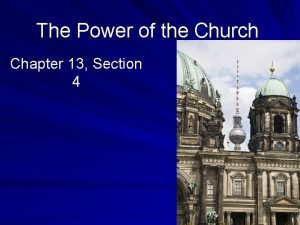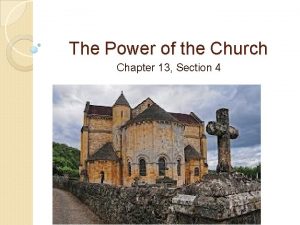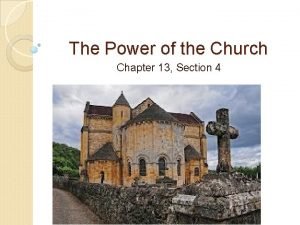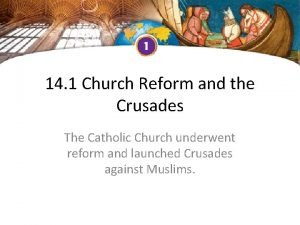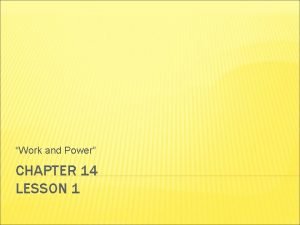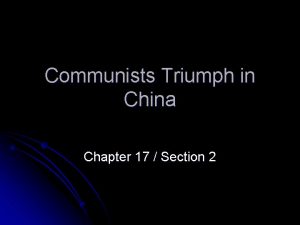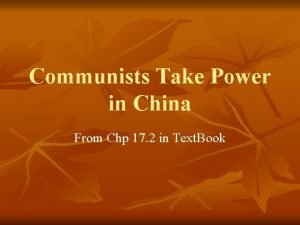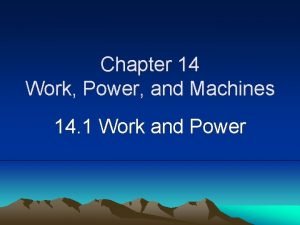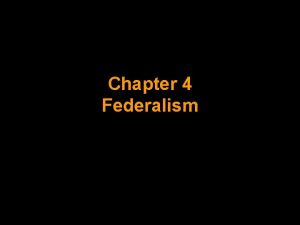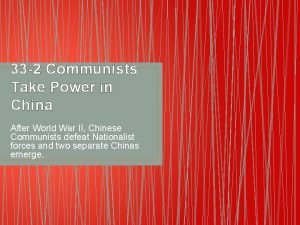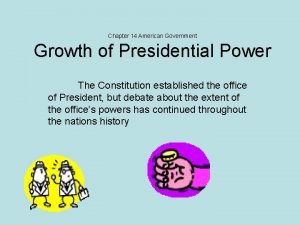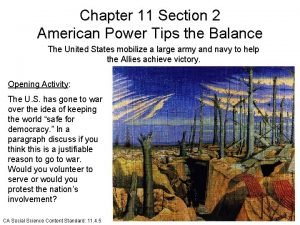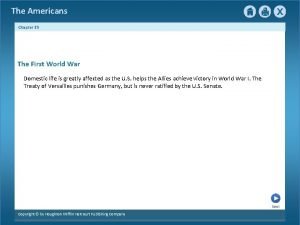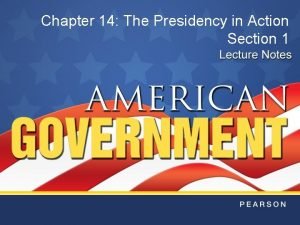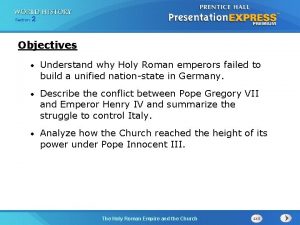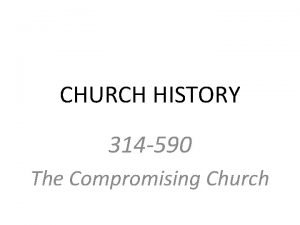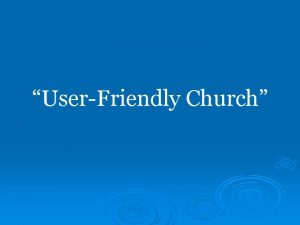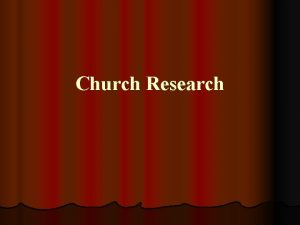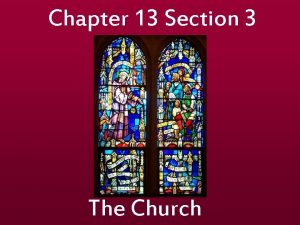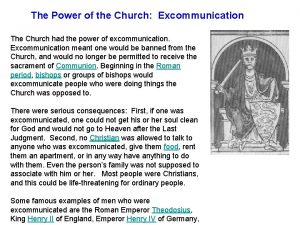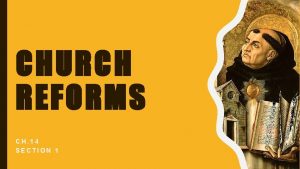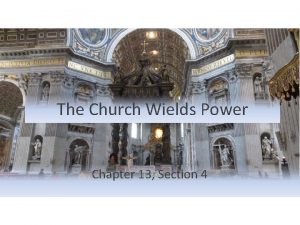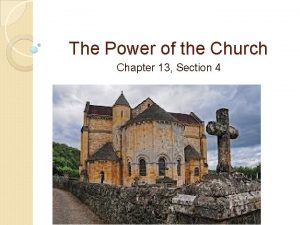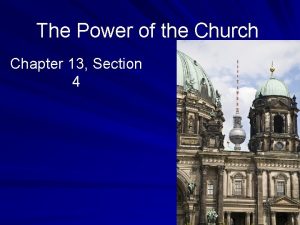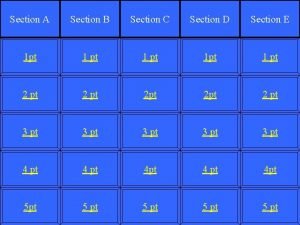The Power of the Church Chapter 13 Section





















- Slides: 21

The Power of the Church Chapter 13, Section 4

Far-Reaching Authority of the Church The Structure of the Church ◦ Power within the Church is organized by status; the pope is the supreme authority ◦ Clergy--religious officials—includes bishops, priests, and others ◦ Bishops supervise priests and settle Church disputes

Church Structure ER CL Pope Priests Y G Bishops

Rise of Religious Importance • Feudalism and the Manor System created division among people. • Political turmoil and warfare • Church teachings bonded people together. • Church provided a sense of security that gave people a sense of belonging. • Middle Ages was also known as the Age of Faith. • Religion took center stage.

Far-Reaching Authority of the Church Religion as a Unifying Force ◦ Religion is important in the Middle Ages; shared beliefs bond people ◦ Clergy administers the sacraments—rites to achieve salvation ◦ Village church is a place of worship and celebration

Sacraments – important religious ceremonies (rites) in the Church. The Sacraments were meant to follow a person’s life from beginning to end. Baptism – initiation rite into the Christian community. Confirmation – people of their own will acknowledge their belief. Holy Communion - a meal of bread and wine that (Eucharist) Christians share in remembrance of Jesus’ last meal. Marriage – ceremony blessing the union of a couple Ordination – ceremony to initiate new priests into the priesthood Penance / Confession – repenting of sins; (Reconciliation) asking of forgiveness Last Rites – prayer service priest provides the dying or over the dead.

Sacraments in Western Christianity Roman Catholic Baptism Confirmation Holy Communion Reconciliation (confession) Anointing of the Sick Matrimony Holy Orders Protestant Baptism The Lord’s Supper (Holy Communion)

Far-Reaching Authority of the Church The Law of the Church ◦ The Church has a system of justice to guide people’s conduct ◦ All medieval Christians expected to obey canon law—Church law ◦ Canon law governs marriages and religious practices ◦ Popes have power over political leaders through threat of: Excommunication—banishment from Church, denial of salvation Interdiction—king’s subjects denied sacraments and services ◦ Kings and emperors were expected to obey pope’s commands.

CH 13 Sec. 4, “Church Justice” canon law – the laws of the Church courts tried people for breaking canon law / heresy. Two types of punishment: Of an individual = Excommunication Of a community / region = Interdict Popes often used the “threat” of these two types of punishment to force kings into obedience. PP Design of T. Loessin; Akins H. S.

The Church and the Holy Roman Empire Otto I Allies with the Church ◦ Otto I (Otto the Great) is crowned king of Germany in 936 ◦ Limits strength of nobles with help of clergy ◦ Gains support of bishops and abbots (heads of monasteries) ◦ Invades Italy on pope’s behalf; pope crowns him emperor in 962

The Church and the Holy Roman Empire Signs of Future Conflicts ◦ Otto’s German. Italian lands become Holy Roman Empire ◦ Holy Roman Empire is the strongest European power until about 1100

The Emperor Clashes with the Pope Emperor VII Henry IV and Pope Gregory ◦ Pope Gregory VII bans lay investiture— kings appointing Church officials ◦ Henry IV orders pope to resign; Gregory VII excommunicates Henry

Showdown at Canossa ◦ Henry goes to Canossa, Italy, to beg Gregory forgiveness (see primary source) ◦ Gregory forgives Henry, buy lay investiture problem is not solved

CH 13 Sec. 4, “H. R. E. Clashes with the Pope One of the things Popes began to resent most was kings who Remember: exercised power over clergy and their church offices. The main focus of Lay investiture – CAUSES Kings are considered this resentment was the practice known as “Lay” – they are not a ceremony in which kings appointed ordained church officials within their own kingdom. “Clergy” ACTIONS Pope Gregory VII 2. Pope Gregory bans resents the power lay investiture that emperors have over the church clergy. OUTCOMES H. R. E. Henry IV calls a meeting of bishops in the H. R. E. and orders Pope Gregory to step down from the papacy. The Showdown at Canossa PP Design of T. Loessin; Akins H. S.

The Emperor Clashes with the Pope Concordat of Worms ◦ Concordat of Worms is 1122 compromise win Worms, Germany ◦ Compromise: pope appoints bishops, emperor can veto appointment

CH 13 Sec. 4, “H. R. E. Clashes with the Pope” CAUSES ACTIONS Pope Gregory excommunicates H. R. E. Henry IV; German bishops & princes side with the pope (fearing an interdict); Henry must seek the Pope’s forgiveness. 3. Henry IV travels to Canossa. OUTCOMES Henry is forgiven by the pope, returns home, and then punishes his German nobles for siding with the pope. The Concordat of Worms is signed in 1122. The issue of lay investiture would remain undecided for another century. 4. Representatives of Church and the emperor meet in Worms. Compromise is reached: Only the pope could now promote priests to be bishops in any kingdom; but the emperor would be given veto power over any selection he didn’t like. PP Design of T. Loessin; Akins H. S.

This is an illustration of the concept of “lay investiture. ” In this picture a king from the Middle Ages is handing a bishop his “shepherd’s crook” a symbol of the office of bishop. The Catholic Church insisted that bishops were chosen by the Pope, not by kings.

Disorder in the Empire The Reign of Frederick I ◦ In 1152, Frederick I becomes king; dominates German princes ◦ Disorder breaks out whenever he leaves Germany ◦ Frederick invades Italy, meets defeat at Legnano in 1176 ◦ Empire collapses after Frederick’s death in 1190

Disorder in the Empire German State’s Remain Separate ◦ German kings after Frederick try to revive empire ◦ German princes, who elect kings, prefer to keep them weak

Primary Source “There, having laid aside all the belongings of royalty, wretchedly, with bare feet and clad in wool, he [Henry IV] continued for three days to stand before the gate of the castle. Nor did he desist from imploring with many tears the aid and consolation of the apostolic mercy until he had moved all of those who were present there. ” POPE GREGORY, in Basic Documents in Medieval History

 Chapter 13 section 4 the power of the church
Chapter 13 section 4 the power of the church Otto invades italy on pope's behalf causes and outcomes
Otto invades italy on pope's behalf causes and outcomes Chapter 13 section 4 the power of the church
Chapter 13 section 4 the power of the church Power trianlge
Power trianlge Chapter 14 section 1 church reform and the crusades
Chapter 14 section 1 church reform and the crusades Chapter 14 section 1 work and power
Chapter 14 section 1 work and power Chapter 17 section 2 communists take power in china
Chapter 17 section 2 communists take power in china Chapter 17 section 2 communists take power in china
Chapter 17 section 2 communists take power in china Chapter 14 section 1 work and power
Chapter 14 section 1 work and power Federalism the division of power chapter 4 section 1
Federalism the division of power chapter 4 section 1 Chapter 33 section 2 communists take power in china
Chapter 33 section 2 communists take power in china Chapter 14 section 1 the growth of presidential power
Chapter 14 section 1 the growth of presidential power Chapter 11 section 2 american power tips the balance
Chapter 11 section 2 american power tips the balance Chapter 19 section 2 american power tips the balance
Chapter 19 section 2 american power tips the balance Chapter 14 the presidency in action
Chapter 14 the presidency in action Chapter 10 section 1 meiosis worksheet answer key
Chapter 10 section 1 meiosis worksheet answer key The middle ages outcome the power of the church
The middle ages outcome the power of the church The holy roman empire and the church section 2
The holy roman empire and the church section 2 The holy roman empire and the church section 2
The holy roman empire and the church section 2 Solar power satellites and microwave power transmission
Solar power satellites and microwave power transmission Potential power
Potential power Flex power power supply
Flex power power supply
